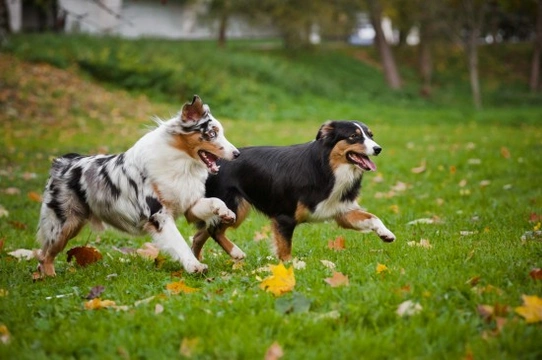
How to encourage your dog to play nicely with strange dogs
Even if your dog is usually good natured with other dogs that they meet out and about, some dogs are more territorial than others in shared spaces, while others simply don’t know how to interact appropriately with other dogs in strange situations at all. If your dog is aggressive or cannot be trusted when meeting other dogs in places such as parks and open spaces, they should of course be kept on a lead and/or muzzled at all times when around others, until you are able to train them to play nicely.
However, if your dog can be trusted not to be aggressive or dangerous but nevertheless, they are not well schooled in the etiquette of appropriate interaction with other strange dogs, there are some steps that you can take to encourage your dog to behave well in shared spaces.
Read on for our suggestions on how to encourage your dog to play nicely with others.
Spay or neuter
There are a whole range of very good, valid reasons for spaying or neutering your dog or bitch, and helping them to get on better with other dogs is just one of them. Two un-neutered male dogs will be very quick to fight each other and become aggressive, and an un-neutered male dog even around other neutered dogs may be overly dominant, and even potentially attempt to hump dogs of both sexes!
Unspayed female dogs will sometimes scrap with other females, and when they are in season, will turn into a whole bundle of trouble with dogs of all types, and should not be left off the lead around other dogs.
Spaying and neutering can go a long way towards minimising or eradicating troublesome behaviour in both dogs and bitches when it comes to socialisation, so spay or neuter your dog unless you intend to breed from them.
Leave toys at home
When meeting in shared spaces and outside of their own territory, dogs tend to be more tolerant of others than when a strange dog is brought into your dog’s own home or garden. However, some dogs will still display territorial instincts, particularly where their toys are concerned. A friendly strange dog might be keen to play with your dog, and if they are used to other good natured dogs, may also be keen to share your dog’s toys! This can prove to be something of a bone of contention with somewhat territorial dogs, and can cause meetings to get off on the wrong foot.
Leave toys at home to avoid the problem from developing, and to take some of the pressure off a meeting. Even sticks picked up along the way can pose problems for dogs that do not like to share, so try to ensure that by the time you meet other dogs, any toys are absent or put into your pockets so that the dogs will meet on an even footing, and not battle over toys.
Manage introductions
Introducing two dogs to each other properly and in a managed situation can go along way towards ensuring that their meeting gets off on the right foot, and diverting any potential friction before they meet each other. Ideally, both dogs should be on the lead for the first couple of minutes of their meeting, but if you are entering a dog park or other open space, other dogs present may already be running freely.
Even so, there is benefit to keeping your dog on the lead until they get to grips with the strangers and get comfortable with the lay of the land, unless being on the lead causes your dog to feel insecure or at a disadvantage. If possible, try to control the first couple of minutes of a meeting, and ensure that your dog and the other dogs present are all ok with the basics of the meeting before they go running off together.
Ensure that your dog is responsive to commands
Ensuring that your dog is responsive to your commands is most important when your dog is in a potentially high-pressure situation, such as when meeting or playing with other dogs. If your dog has a lot going on around him and is getting into a tangle with another dog, will they still respond if you call their name or recall them? If not, keep working on it until your dog’s responses are excellent.
Actively socialise your dog
The more dogs that your own dog meets and plays with, the more information they will gather about correct interaction with other dogs, and what is and is not deemed to be acceptable play.
If your dog is a bit of a horror with others, it is easy to think that the path of least resistance is to go out of your way to avoid meetings with other dogs altogether, but this is in fact counter productive. Try to arrange safe, supervised meetings with other dogs, and look for appropriate opportunities to introduce your dog to others, such as at a training class or by prior arrangement with another dog owner.
Given time, your dog should soon begin to learn that play is much more fun when they behave appropriately than when they are a pain!



